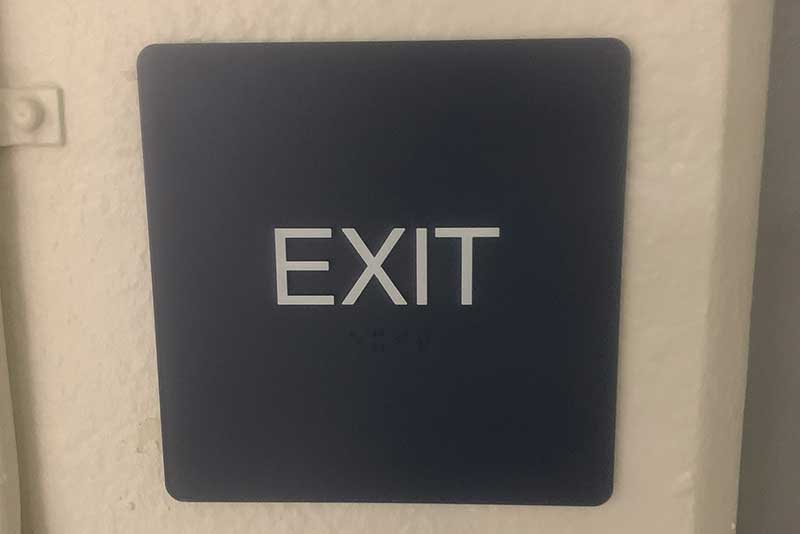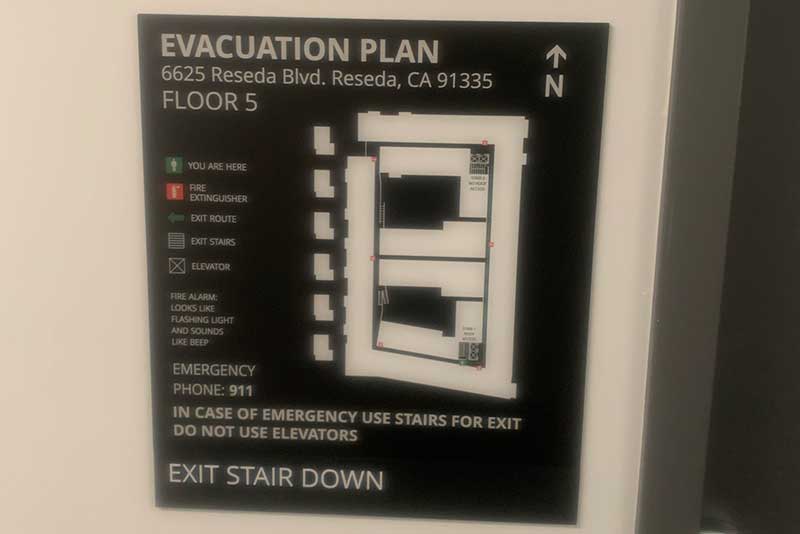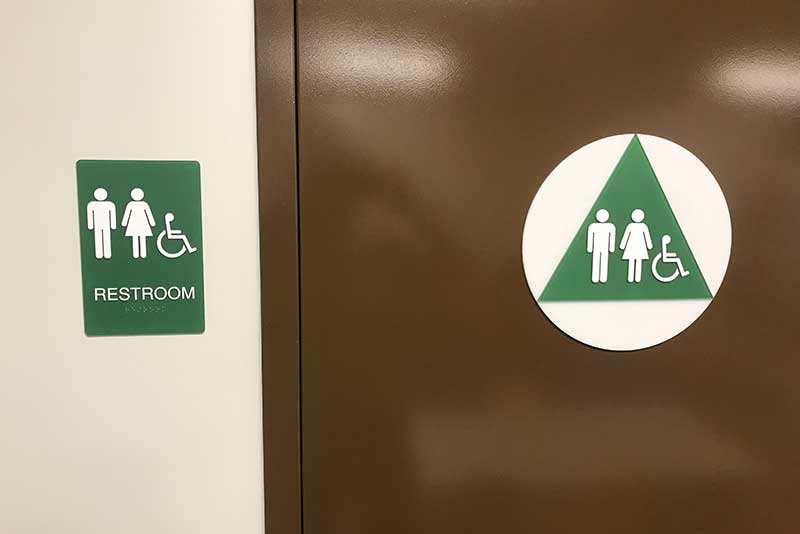When it comes to large buildings such as hospitals, schools, and offices, there are many things to consider and remember to plan for. One such thing is ADA compliance. Many details go into making sure your buildings comply with ADA regulations, including when and where ADA signs are required. ADA regulations are all about making facilities user-friendly for all patrons.
What Is ADA and Why Is It Important?
It is essential to understand what the ADA is and why it matters. The ADA, or the Americans with Disabilities Act, is designed to prevent discrimination based on disability in employment, transportation, access to state and local government programs and services, communications, and public accommodations. The ADA is important because it means that people with disabilities will be better able to enjoy more of the same opportunities as those without disabilities.
When Are ADA Signs Required?
tactile exit sign with braille
Any building that is open to the public requires ADA compliance. That includes buildings like hospitals, schools, hotels, offices, restaurants, grocery stores, and more. State, county, and local government facilities must also have ADA signs. If the room’s function is not likely to change in more than seven days, it is considered a permanent room and needs an ADA sign. This includes signs with tactile copy repeated again in braille. By ADA standards the absence of these signs constitutes discrimination against the blind and the visually impaired.
On the other hand, if the room’s function will be different within seven days, a sign is not required. Areas such as parking lots, those not meant for public use, or the outside of a building that has the name and address of the establishment on it are not required to have ADA-compliant signs either. However, those areas that pertain to safety, such as fire exits, elevators, and stairways, must have ADA-compliant signage.
Types of ADA Signs
ada-compliant evacuation sign
Not all signs have ADA regulations associated with them, making staying in compliance a little more complex. ADA regulations are divided into four categories: identification signs, informational signs, direction and wayfinding signs, and overhead signs. The reason the ADA regulates them is due to their purposes. These signs are meant to identify permanent interior rooms and spaces, provide directions and information about permanent interior spaces, and identify directions to or information about accessible features. Examples of standard ADA signs include the following:
- ADA Room Number Signs
- ADA Restroom Signs
- ADA Stairwell Signs
- ADA Office Name Signs
- ADA Elevator Signs
- ADA Emergency Exit Signs
- ADA Floor Number Signs
These signs are examples of standard ADA signs and must comply with the regulations found within the Act.
Mounting and Placement
ADA-compliant restroom signs
It is not just enough to have the correct type of sign posted. They must be properly mounted and placed so as to comply with ADA regulations. You can choose one of three configurations for placement: wall-mounted, wall-protruding, and overhead. Wall-mounted ADA signs should be on the door’s latch side, 49-60 inches off the ground unless the doors are double doors. In that case, the sign should be placed to the right of the right-side door. There should be an 18×18 inch area of clear floor space around the sign. For wall-protruding signs to be ADA compliant, they should be at least 27 inches off the floor, stick out no more than four inches, and must not block emergency equipment, sprinklers, or doors. Overhead signs must be at least 80 inches above the floor and fixed in place to be stable and secure. They cannot block emergency equipment, sprinklers, or doors, just like wall-protruding signs. Regardless of the configuration, the final placement should be between 40 inches and 10 feet off the ground.
Don’t Neglect ADA Compliance!
Placing signs around buildings that meet ADA compliance standards may seem unnecessary, but neglecting it is a mistake. The financial burden that companies can incur for failing to maintain ADA compliance can be hefty. Fines can range from $55,000 to $75,000 for an initial incident, with subsequent fines increasing to $150,000. Lawsuits can also be levied against a business for failing to comply. Lawsuits themselves tend to be quite costly and time-consuming – not something any business is going to want to deal with if they can avoid it altogether. Local building inspectors handle most enforcement when it comes to ADA building signage, but the ultimate responsibility lies with the Department of Justice.
When it comes to disability compliance, it’s important to note that California has ADA requirements that go beyond the federal statute. You will need to make sure that your buildings comply with those too. Still, the statutes mandated by federal law are always a good place to start. Make sure you’re familiar with ADA regulations, including the required signs, so that you’ll be able to stay in compliance. You can find the correct examples of ADA-compliant at our website located here.







